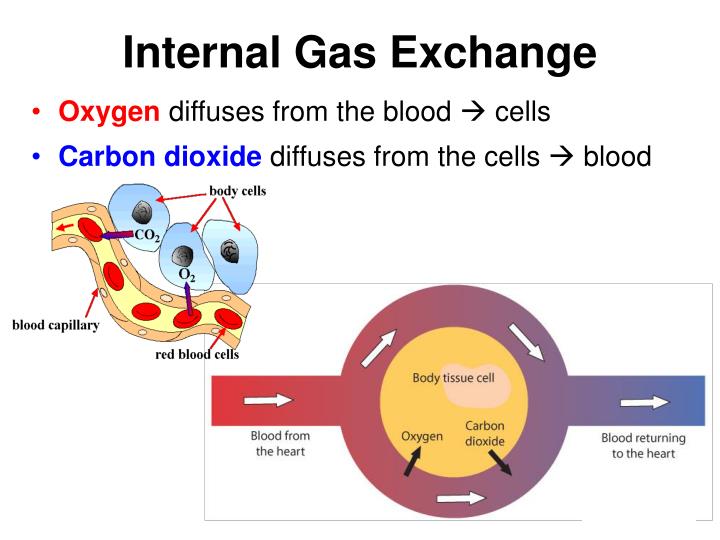

After temperature and humidity equilibration, the compartments were sealed for 5-15 min, depending on the animal's age. The chamber was maintained at pouch temperature (36 ☌) by a water bath. The tube passed through a thin rubber stopper placed in the centre of a moist cylindrical chamber of volume 0.5-2 ml, completely separating the chamber into two compartments, one containing the animal and the other communicating with the airways.Ī small quantity of air was injected into one compartment, and the absence of pressure transmission to the other indicated complete separation.

The low mobility of the newborns ensured that the seal was maintained. We sealed a mask made from a short length of polyethylene tube to the face of the animal, covering both mouth and nostrils, using a removable dental polyether material.
#OXYGEN AND CARBON DIOXIDE ARE EXCHANGED SKIN#
We measured separately, but simultaneously, the gaseous metabolism of lungs and skin in 22 pouch young from five litters during the first three weeks after birth. The ratio between body surface area and V O 2 is therefore about 220 cm 2 per ml O 2min -1, above the minimum value necessary for the skin to be an important site of gas exchange. In the newborn dunnart and in individuals up to 21 days old, V O 2 averaged 18 ml kg -1 min -1, and the body surface area is estimated at about 7 mm 2. The lungs are represented by a small number of approximately spherical air sacs ( Fig. At birth, the skeleton is entirely cartilaginous and the internal organs are visible through the transparent skin. After a gestation lasting about 13 days, the newborn is about 4 mm long and weighs around 17 mg, so it is one of the smallest newborn mammals known 2. The Julia Creek dunnart is a small dasyurid marsupial from Australia 5. In humans, this value would be 70 m 2 per 4,550 ml min -1, or about 150 cm 2 per ml O 2 min -1. If the lungs were designed optimally 4, the ratio between the pulmonary gas-exchange surface and O 2 flux would be the minimum necessary for gas exchange. In an adult human, the body surface could therefore never replace the lungs as a site of gas exchange because its total area is only about 2% of the minimal surface required. Such high values are possible because of a very large surface area for gas exchange in the lungs, estimated at about 70 m 2 ( ref. Further, because they are delivered at a very early stage of development 2, the skin, which is hairless and rich in blood, provides a much smaller barrier to gas diffusion than in most newborn mammals.Ī 70-kg human athlete can reach a level of maximal oxygen consumption ( V O 2) of up to 65 ml kg -1 min -1 (4,550 ml min -1). These small newborns have lower O 2 consumption than non-marsupial species 1, and thermoregulation is not a problem because they develop in the thermoneutral environment of the maternal pouch.


 0 kommentar(er)
0 kommentar(er)
